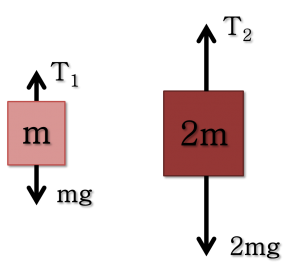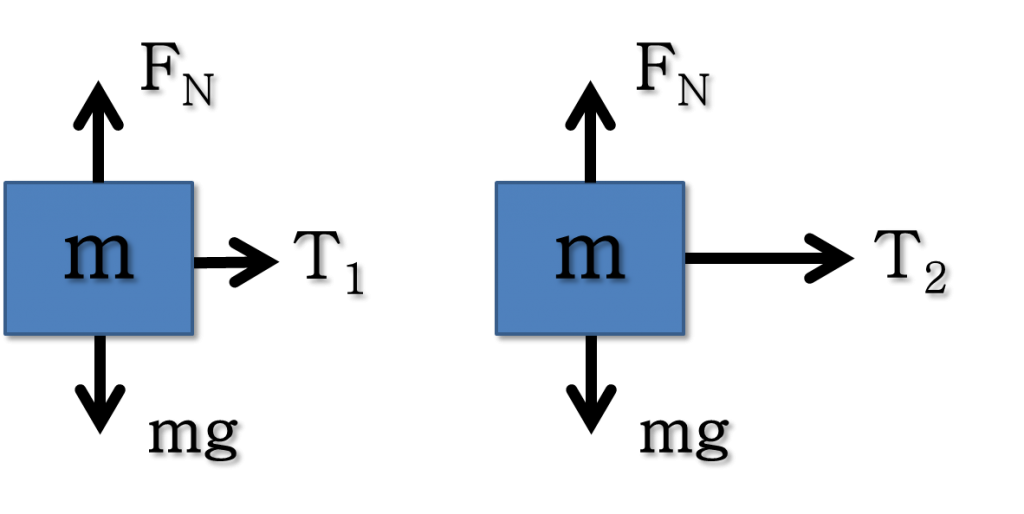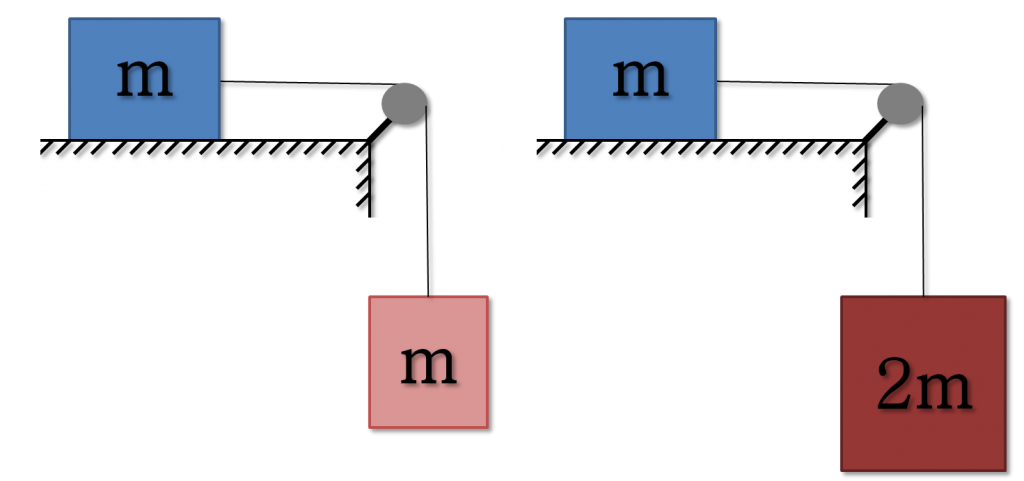[He] knows everything there is to know about mechanics…
Adam Savage
What prompts Adam to say this? As far as I can tell, Charles Haine is a film director with little to know science/engineering training…
I’m not sure what I think of this show, Unchained Reaction, yet. I like the idea; it reminds me of Junkyard Wars, which I loved. I’m trying to convince myself not to record the show and skip everything but the completed runs at the end. I haven’t done it yet, but I’m tempted.
Anyway, I watched the “Speed” themed episode and there was one big cringe-inducing moment near the beginning of the show that I had to follow-up on here. I spent a whole week teaching kids about this very principal in physics lab, so I figured I’d take a post to rant on a simple physics concept.
In the first challenge, teams have to complete the first link in their chain. The special effects team (“Monster Crew”) wanted to race a tortoise and hare, and to get them started, they were using counterweights to pull the animals across a table. The falling counterweights pulled ropes connected to the animals.
I think Adam and Jamie’s consultant, Charles Haine, over-thought it a little bit, and in an effort to appear useful and lecture to the team, he sort of threw up all over himself. After looking up his credentials (or lack thereof), I’m not nearly as surprised about what transpired…
He opened his misguided lecture with the following: “You know that two objects of different weights fall at the same speed if they have the same aerodynamic resistance, right?”
This is not a good start. We all learned that with no air resistance, objects subjected to the same gravitational field with accelerate at the same rate. But once any significant air resistance is introduced, objects fall at different rates depending on their weight, size, shape, etc. I’m not even sure what he meant by aerodynamic resistance (drag coefficient, aerodynamic drag force?), but either way, he’s wrong.
The team explains to him that the different speeds will be due to the different weights of the tortoise and the hare. Charles seems to go along a little bit: “More drag on the system by having a heavier weighted base will probably create enough for you.” Which isn’t necessarily patently wrong, but he’s not really being helpful, either.
See, to begin with, the hare wasn’t being pulled quickly enough. As a planned fix, one of the special effects guys (who isn’t dubbed an “expect in all things mechanical”) sensibly proposes to use a heavier counterweight (i.e. more potatoes).
Charles counters: “Remember, extra weight’s not going to fall any faster.” Argh! C’mon, your job is to help them. This is patently wrong, so it is really less helpful than not saying anything at all.
Let’s begin by looking at free body diagrams of each falling weight (sack of potatoes). For simplicity, I’ll just set one mass to double the other. Also, we’ll ignore friction and aerodynamic drag (which, if anything, helps Charles’ case) to keep things simple; rest assured, whether or not we make these assumptions, Charles is still wrong.
 We know how gravity is acting on the two potato bags, producing a force of just mass times gravitational acceleration. What we don’t quite know is what the tension they’re experiencing is. So let’s look at the rabbit and the hare to try and figure it out:
We know how gravity is acting on the two potato bags, producing a force of just mass times gravitational acceleration. What we don’t quite know is what the tension they’re experiencing is. So let’s look at the rabbit and the hare to try and figure it out:
 All right, the normal force from the table definitely cancels out the weight of the block. But we still don’t know what either tension is. Although, if we assume a perfect (or near-perfect) pulley, we can say that the tension is constant throughout the rope, so that each pair of blocks experiences the same tension force (either
All right, the normal force from the table definitely cancels out the weight of the block. But we still don’t know what either tension is. Although, if we assume a perfect (or near-perfect) pulley, we can say that the tension is constant throughout the rope, so that each pair of blocks experiences the same tension force (either or
).
So let’s first look at the left-hand situation. We have two equations:
(in horizontal dir. for the block on the table)
(in vertical dir. for the hanging block)
Notice I use the same acceleration, in both equations; since the blocks are connected by a rope (without slack or elasticity), we can assume they accelerate at the same rate. So that’s two equations and two unknowns (
and
). We can work with that!
With some simple algebra, we can find . Following the same procedure with the heavier sack of potatoes, we discover
. For those of you keeping score at home,
; in other words, the heavier sack of potatoes (and whatever is connected to it) will accelerate more quickly.
What’s happening, in words, is that due to the rope, you’ve essentially got a single mass moving/accelerating here; however, gravity is only able to accelerate a fraction of it. So as the suspended mass becomes a larger fraction of the total mass, the acceleration of the system will increase, ever approaching the maximum value of .
Fortunately, one of the team members doesn’t just take his words at face value, and while he can’t really put into words why he’s right about his idea for extra potatoes, I believe his intuition served him well. Sure enough, in the final cut, they got the hare to zip along the table.
I think a working knowledge of physics is a great thing to have, but it should be used in conjunction with intuition and common sense. I’m not saying that this world isn’t full of non-intuitive (but explainable) behaviors, but when you perceive the physics of the problem (as you understand them) to fly in the face of common sense, that’s a sign to take a step back and really think through what’s going on.
The topic sort of invites confusion, which is why it was in the physics lab: so it could challenge students’ grasp of the concepts. The difference is that Charles is not an undergrad; he’s on the show as an expert.
Okay, that’s fine, we all make mistakes, and he probably wishes he could have that back. But therein lies my problem with it. This isn’t live T.V. How does all of that make it past the editing process? At the very least, mix in a studio voice-over to correct the misinformation.
I’d say that they should bring me on instead, but I’m guessing Unchained Reaction won’t make it to season two…



Being a member on team monster squad I totally agree with you. Charles was used in place of Adam and Jamie due to the fact that they were swamped shooting then next season of Mythbusters. They were only on set for the one day when they shot the intro for the next week and the run of the machines from the last week all in one day. He was a nice guy off camera and on camera nothing ever really seemed good enough for him. Also keep in mind that not every machine that you saw work 100% on tv really did. I can attest to ours working 100% for the cameras even after the fire marshal set it off right after they called lunch (we set off the machines right after lunch).
Thanks for the insight, Brian! It’s pretty obvious Adam and Jamie don’t have quite enough time for the show since during the build, they only comment on some video on a computer screen (in fact, for all we know, that part could be shot after the competition).
Glad to hear he’s a nice guy off camera. I’m just a little surprised that the on-camera stuff looks a little off-the-cuff. And not in a good, “let’s make this look like reality TV”, way.
It looks like you had a lot of fun, and as the judges noted, you’re build was awesome technically and artistically. Thanks for sharing!